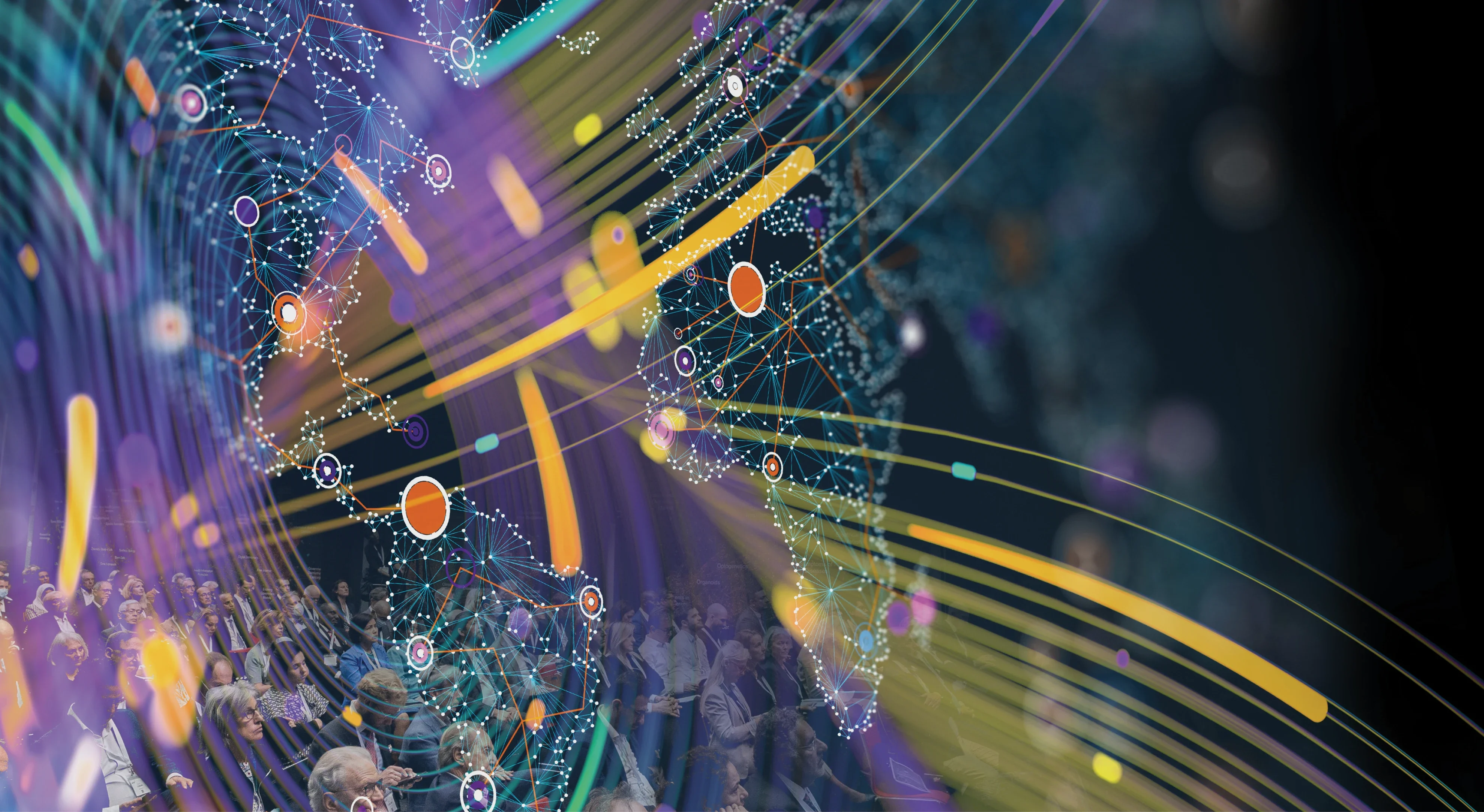GESDA is primarily concerned with anticipating the transformational changes that such breakthroughs will bring to society and with identifying opportunities to improve how we will live in the future as individuals, in societies and on our planet. But we recognise that how research and innovation is undertaken, and how the questions that arise are addressed, also require consideration if we are to harness the potential of future research for the global good.
The Radar therefore not only reflects expert opinion about the breakthroughs we might expect over the next 5, 10 and 25 years, and their consequences, but also provides an anticipatory tool for changes in how research itself will be carried out. Advanced technologies — such as our ability to collect and analyse vast datasets, breakthroughs in our ability to synthesise novel DNA and the power of machine learning to model hitherto unknown phenomena — are all examples of breakthroughs that have the potential to significantly affect the course of scientific progress.
Who chooses what research is conducted, and by whom, is a crucial component of the research endeavour, and is largely determined by those who provide the resources needed and those who set the policy agenda. The question of who owns and controls the resources critical for future research, as well as changing global circumstances, approaches and philosophies, are challenging this status quo.
At the extreme, the future research agenda may not even be designed by humans. In some fields, such as synthetic biology, increasing automation of labour and data-intensive laboratory work raises the possibility of future research being carried out by robots guided by artificial agents, operating within entirely autonomous systems. At the same time, this automation is expected to drive down the cost of novel biological synthesis and make it more accessible to those without the resources needed to run their own full-scale laboratories, further diffusing decision-making power.
Even in the nearer term, there are likely to be shifts in power which will have transformative consequences for the process of science and research. Researchers are anticipating three major trends over the next 25 years: research unification, the further development of artificial intelligence and the interplay between research and geopolitical shifts.
The first of these trends is a move towards research unification, with the consequent breakdown of “siloed” disciplines and “isolationist” institutions. Researchers are already engaging in wider, more diverse collaborative networks than ever before, as they engage with a broad range of expertise to address increasingly sophisticated research questions. This is catalysing new partnerships between individuals, teams and research disciplines.
For example, collaborations between psychologists, data scientists, physicists and evolutionary biologists are expected to identify the driving factors behind different societal group behaviours within the next 10 years as well as ways to precisely manipulate these dynamics in the real world. Another example is the increasingly essential collaboration between AI specialists, neuroscientists and philosophers in developing more capable robots and autonomous systems. A third is the coalitions of ecologists, molecular biologists, data scientists, anthropologists and ethicists who will be required to monitor and restore or augment ecosystems.
Such collaborations blur the conventional dividing lines between research disciplines and schools of thought. The conceptual frameworks and infrastructures which researchers use to make sense of the world are also being revised and reframed to reflect changes to our societies and environments. There is an expectation that impactful research with relevance to acute real-world problems will require the complete erasure of divisions between previously disparate fields of research.
In parallel, historians and philosophers of science are providing insights into the decolonialisation of research practice, and the tools to consciously and intentionally shape its future to meet the diversity and globality of wants and needs. This in turn is increasing awareness of the importance of maintaining and developing different knowledge systems, embracing the understanding provided by, say, Indigenous knowledge as well as that gained using Western research frameworks.
For example, Indigenous knowledge is likely to be key to realising the potential of psychoactive compounds for therapeutic use, developing food systems robust enough to overcome a changing climate or shaping future ecosystems. Unification of research practice promises to span geographic, cultural and social distinctions between researchers, bringing about an inclusive “globalism” able to embrace multiple perspectives, and discarding “othering” in research and knowledge generation.
The second transformational effect on research comes from artificial intelligence. While the technology has only just begun to be used, it has already yielded striking results. For example, gaining any indication of the structure and function of a protein has traditionally involved many years of laborious laboratory work by a team of scientists. But in 2020, DeepMind released its AlphaFold modelling tool, which can predict the structure of a protein from its sequence in a matter of mere seconds. By August 2024, the Nature paper accompanying the AlphaFold release had been accessed 1.67 million times and cited more than 15,000 times in subsequent scientific papers.
It is noteworthy that while AlphaFold is rapidly becoming a staple tool of the research community, much of which is publicly funded, it is owned by Google, a commercial non-state entity, and the knowledge created using it may also be held by such entities. For example, Ginkgo Bioworks uses AlphaFold to generate databases of protein structures for industrial clients and is one of the world’s most successful synthetic biology companies. Paid access to its proprietary database of these biological building blocks is a key component of its business model. This is knowledge that might previously have been done by academic research organisations and placed in the public domain. Such privatised control of technologies and data fundamental to research raises key questions about where decision-making power sits within the research ecosystem, and how this will constrain who can carry out research, what research is being done, and where it can be carried out.
Furthermore, the ability of AI to uncover hitherto obscure patterns and associations is reliant on the quality of the datasets themselves. Lack of adequate data can create bottlenecks for entire fields of research. The robotics community, for example, has only fragmented and non-standardised data for artificial sensory stimulation, which severely limits researchers’ ability to train artificial intelligence to control a robotic “body”. Another example, from medical research, is the chronic lack of data on the early human embryo during the time window when most pregnancies fail, severely limiting development of interventions. A third is the existence of “darkspots” in our knowledge of the world’s ecosystems; for example, our paucity of knowledge about the vast number of microbes that are difficult to culture in laboratories.
So while AI has much promise, it remains powerless without such “big data” resources, and the ability to access and process standardised, high-quality and well-annotated data is becoming a fundamental requirement for researchers. While there are now fewer technical barriers, there are potentially more logistical, legal and commercial obstacles: for example, data may be held by multiple organisations of different kinds and with different expectations of the uses to which it can be put. So, for example, there are also ecological “greyspots” where data about an ecosystem does exist but is not readily available for research. The question of who “owns” data — whether historical archives, creative assets such as digital artworks or genetic sequences — thus has significant implications. How datasets, archives and infrastructures are created, accessed and understood; who owns them or is responsible for them; and how their longevity and security can be guaranteed, given their dual digital and physical natures, will be fundamental issues for the future of research.
Finally, science and research do not take place in isolationfrom other forces in society. There are many examples described in the Radar of how the geopolitical climate is changing research agendas both nationally and internationally, both for governments and for private entities. That might mean investing individually for reasons of economic advancement or commercial gain; or it might mean working collectively to mitigate threats or generate the platforms on which future research and prosperity rests. Examples include the vast investments made in the technology sector following the release of ChatGPT in 2022; the continuing tensions surrounding deep-sea mining and the use of the ocean to support the renewable-energy transition; and fears that advances in synthetic biology will fuel new forms of biological warfare. Outbreaks of armed conflict, as well as increased polarisation both within and between nations, are stimulating research into diverse fields such as behavioural science, neuro-augmentation and satellite capabilities.
In the future, therefore, this question of who can carry out what research is likely to be an even greater determining factor in the distribution of power beyond the research ecosystem. Quantum computing and its promise to outperform current computing paradigms is an excellent example of how a technological gap between different states, entities or groups has the potential to grow exponentially wider and very quickly become impossible to bridge. Scholars examining the tight interplay between science, scientific practice and power anticipate that the relevance of these relationships will only continue to grow.
As we further develop the Radar, we hope that it will become an invaluable resource for anticipating the future of science and research practice, for identifying the changes most likely to have transformative effects and for anticipating the implications of these changes and the place that research holds within our society. Finally, we hope to integrate insights on anticipated trends in the practice of research into future releases of the GESDA Science Breakthrough Radar® in order to develop it as a useful and impactful resource for scholars and policy-makers, generating new insights into how science and society may change in the future.





